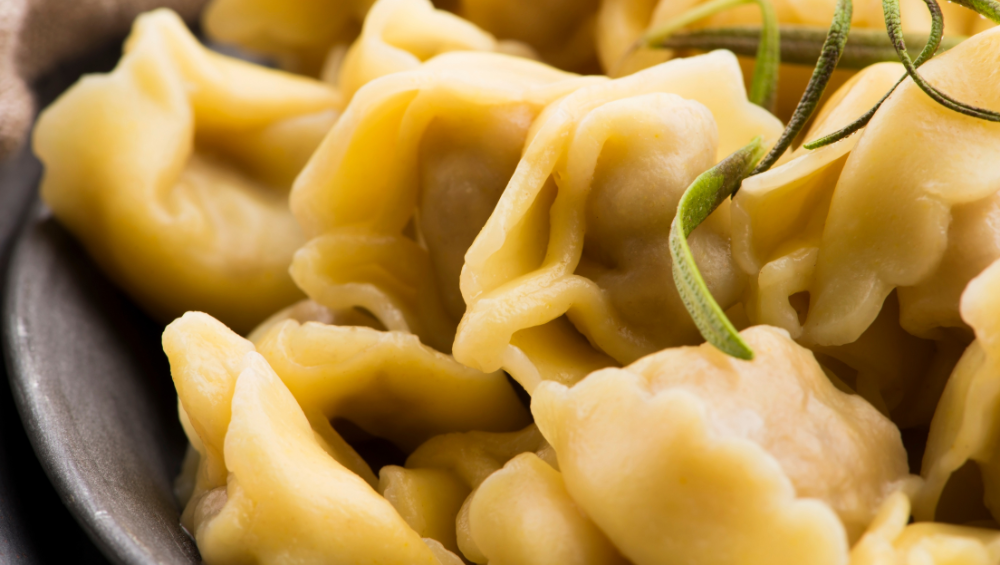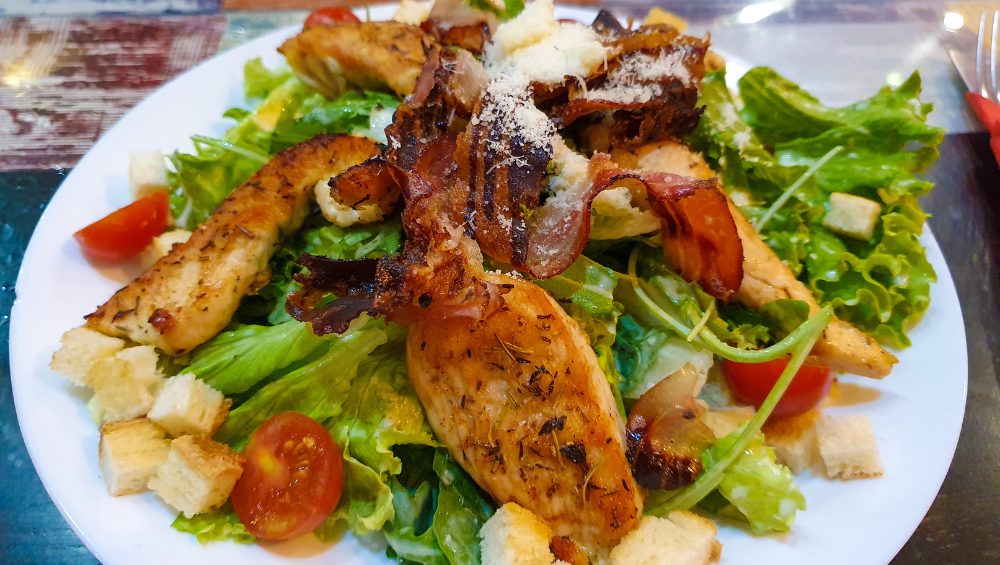Table of Contents
Are you a self-proclaimed foodie with an insatiable appetite for international cuisine? If so, you’re in for a treat! Join us on an epicurean expedition as we explore some of the globe’s most renowned culinary capitals for foodie travel.
From street food stalls to Michelin-starred restaurants, each city on our gastronomic journey promises a feast for your senses.
1. Bangkok, Thailand
Bangkok’s bustling street markets are a food lover’s paradise. Savor aromatic dishes like Pad Thai, Tom Yum Goong, and green curry. The city’s street food culture is deeply ingrained, offering affordable and delectable meals.
Bangkok’s Signature Dishes
Here are some dishes that make Bangkok a must-visit culinary capital for foodie travel:
- Pad Thai: This global favorite is a feast of flavors, combining stir-fried rice noodles with a variety of ingredients such as tofu, chicken, shrimp, bean sprouts, peanuts, and lime. The balanced taste of sweet, sour, and spicy makes Pad Thai a true symphony of Thai cuisine.
- Tom Yum Goong: This hot and sour shrimp soup is another Thai classic. Infused with fragrant spices like lemongrass, kaffir lime leaves, galangal, and chilies, each spoonful promises an explosion of flavors.
- Green Curry: Known locally as “Kaeng Khiao Wan,” this rich and creamy dish is made from green curry paste, coconut milk, meat (commonly chicken), and an abundance of vegetables. Its distinct color and flavorful depth make it a staple of Thai cuisine.
- Street Food Culture: From skewers of grilled meat to bowls of boat noodle soup, Bangkok’s streets are adorned with food stalls. The city’s food culture transcends the boundaries of traditional restaurants, making it a true street food paradise.
These dishes are just appetizers to Thailand’s rich culinary canvas. Bangkok, known for its foodie-friendly streets, is truly one of the world’s culinary capitals.
The History of Flavors in Bangkok
Bangkok, one of the world’s foremost culinary capitals, boasts a rich history that has shaped its vibrant food culture. This culinary capital’s gastronomic journey is deeply interwoven with its social and cultural fabric, making every dish a testament to the Thai way of life.
Thai cuisine is renowned for its harmonious blend of flavors – sweet, sour, spicy, and salty – forging a balance that is quintessential to the Thai palate. This intricate balance can be traced back to ancient trade routes that brought a mélange of flavors and cooking techniques, enriching Bangkok’s culinary tapestry.
One cannot talk about Bangkok’s food history without mentioning its street food culture. This ubiquitous aspect of Bangkok’s food scene emerged from the city’s bustling river trade. Vendors began selling quick, affordable meals to busy traders and workers, thus laying the foundations of what would become an essential part of Bangkok’s identity as a culinary capital.
2. Paris, France
Paris is synonymous with gourmet dining. Enjoy escargot, coq au vin, and decadent pastries at quaint cafés and Michelin-starred restaurants. The city’s culinary elegance is legendary.
Parisian Foodie Travel
Paris, a true culinary capital, is renowned for its gourmet delicacies. Here are some of the city’s most iconic dishes:
1. Escargot: A classic French dish, escargot is cooked snails typically served with a buttery, garlicky sauce. They are considered a delicacy and are often paired with a glass of white wine.
2. Coq au Vin: This slow-cooked chicken dish is a testament to the French love for cooking with wine. The chicken is braised with red wine, mushrooms, onions, and perhaps a bit of bacon, resulting in a rich, hearty meal.
3. French Pastries: Paris wouldn’t be the same without its assortment of pastries. From flaky croissants to creamy éclairs and delicate macarons, these sweet treats are as much a feast for the eyes as they are for the palate.
4. Crêpes: Whether sweet or savory, crêpes are a staple of Parisian street food. Fillings can range from Nutella and bananas to ham and cheese, making this versatile dish a perfect snack at any time of the day.
5. Cheese and Baguettes: Perhaps the simplest yet most iconic Parisian meal is a selection of local cheese with a fresh baguette. This humble combination, often enjoyed with a glass of wine, epitomizes the city’s culinary philosophy of ‘less is more’.
These dishes represent just a taste of the culinary delights that make Paris a must-visit destination for any foodie traveler.
History of Flavors in Paris
As a culinary capital, Paris‘ illustrious gastronomic reputation is steeped in a rich history that has shaped its food culture. Encompassing centuries of culinary evolution, Paris offers a deep and flavorful journey for foodie travel enthusiasts. Originating from humble beginnings, Parisian cuisine has been influenced by various socio-political changes, international trade, and cultural exchange, which have collectively contributed to the city’s vibrant gastronomic landscape.
French cuisine, especially Parisian, is recognized for its meticulous preparation, fine ingredients, and exquisite presentation. This is a testament to the city’s historical focus on quality over quantity. The emphasis on fresh, local produce, dairy, and meats can be traced back to the agrarian society of France’s past, where each region developed distinctive specialties based on the produce available.
In the Middle Ages, Paris emerged as a hub for spice trade, introducing a plethora of new flavors and ingredients to the city’s culinary scene. This integration of global influences helped shape the city’s gastronomy, making it the foodie travel destination it is today.
Moreover, Paris’ renowned café culture, boasting an array of pastries and bread, originated from Viennese influences in the early 19th century. The introduction of dishes like escargot and coq au vin came later, during a period of culinary renaissance in the late 19th and early 20th centuries, when chefs started experimenting with cooking techniques and flavor profiles.
Lastly, Paris’ culinary scene would be incomplete without mentioning its wine culture. Wine has been a staple of Parisian dining since Roman times and continues to be a significant component of its gastronomic identity today.
In essence, every bite you take in Paris delivers a burst of its rich culinary history, making it one of the world’s foremost culinary capitals and a true paradise for foodie travel.

3. Tokyo, Japan
Tokyo offers a sensory overload of flavors. Try sushi at Tsukiji Fish Market, ramen in cozy noodle shops, and tempura in historic districts. Japanese precision and tradition shine through in every dish.
Amazing Foods in Tokyo, Japan
Ready to embark on a Japanese culinary adventure? Tokyo, Japan’s bustling capital, is a food lover’s dream, offering an impressive array of mouthwatering dishes.
- Sushi: One of the quintessential representatives of Japanese cuisine, sushi is a delicacy featuring vinegared rice combined with a variety of ingredients such as raw or cooked seafood, vegetables, and sometimes tropical fruits. Enjoying sushi at the famed Tsukiji Fish Market is a must-have experience for foodies.
- Ramen: Ramen, a hearty bowl of wheat noodles served in a savory broth with various toppings such as sliced pork, green onions, and sometimes a soft-boiled egg, is a staple in Tokyo’s culinary scene. Its robust flavors and comforting warmth make it a popular choice among locals and tourists alike.
- Tempura: Tempura refers to a traditional Japanese dish where seafood and vegetables are coated in a light batter and deep-fried to golden perfection. This dish, often enjoyed with a side of dipping sauce, is a perfect blend of crunch and delicate flavors, best savored in Tokyo’s historic districts.
Historical Flavors in Tokyo
As one of the world’s premier culinary capitals, Tokyo’s gastronomy is a dynamic fusion of traditional elements and international influences. This multifaceted culinary landscape makes Tokyo a compelling destination for foodie travel. Tokyo’s culinary journey commenced with simplistic, nourishing meals, primarily centered around rice, pickled vegetables, and freshwater fish. However, the face of Tokyo’s gastronomy drastically transformed with the advent of the Edo period. As Tokyo (then Edo) became the political epicenter of Japan, its culinary scene flourished, embracing the concept of “Edo-mae” sushi, using fish from Tokyo Bay, and other local ingredients.
In the post-WWII era, Tokyo’s food scene underwent another significant evolution. The city’s increasing global exposure led to the incorporation of international flavors and techniques, contributing to Tokyo’s diverse culinary repertoire. Today, the city is a gastronomic powerhouse, boasting more Michelin-starred restaurants than any other city in the world. Ramen shops, sushi bars, tempura restaurants, and upscale kaiseki establishments coexist harmoniously, offering foodie travelers a gastronomic adventure steeped in rich historical flavors and innovative culinary artistry. Tokyo’s food culture not only offers a delectable feast but also narrates the city’s historical and cultural evolution, making it a must-visit culinary capital for any epicurean explorer.
4. Mexico City, Mexico
Mexico City is a fiesta of flavors. Dive into street tacos, mole, and churros. The city’s vibrant street food scene and colorful markets reflect its rich culinary heritage.
Mexican Foodie Travel
Mexico City, a vibrant culinary capital, serves up a fiesta of flavors that makes it a must-visit for any food enthusiast. Here are some iconic dishes that define the city’s gastronomic scene:
- Tacos: Perhaps the most recognizable dish from Mexico, tacos are a staple in Mexico City’s street food scene. They consist of small hand-sized corn or wheat tortillas topped with a variety of fillings ranging from grilled meats to fresh veggies, topped off with salsas, lime, and herbs.
- Mole: A symbol of Mexico’s culinary diversity, mole is a complex sauce made from an array of ingredients, including various types of chilies, spices, nuts, and chocolate. The rich, flavorful sauce is typically served over meat and accompanied by rice.
- Chiles en Nogada: This patriotic dish, featuring the colors of the Mexican flag, is stuffed poblano chiles filled with a mixture of meat, fruits, and spices, topped with a creamy walnut sauce and pomegranate seeds.
- Churros: To satisfy your sweet tooth, churros are a must-try. These fried dough pastries are often dusted with sugar and served with a side of thick chocolate for dipping.
- Street food: From tamales and tacos to the quintessential Mexican tortas, the streets of Mexico City offer a culinary adventure that reflects the city’s rich cultural heritage and gastronomic diversity.
This is just a sneak peek into the culinary delights of Mexico City. Its dynamic food scene, deeply rooted in tradition yet open to innovation, makes it one of the world’s most enticing destinations for foodie travel.
Historical Flavors in Mexico City
Mexico City, one of the world’s foremost culinary capitals, offers a rich tapestry of flavors that have been influenced by centuries of cultural exchange and political shifts. The city’s gastronomic journey began with the ancient Aztecs, who depended on staples such as corn, beans, and chili peppers. Over time, the Spanish conquest introduced new ingredients like rice, wheat, and pork, radically transforming the culinary landscape.
The fusion of native Mesoamerican cooking with Spanish influences resulted in the unique and vibrant cuisine we associate with Mexico City today. Street food, a quintessential part of the city’s culinary identity, showcases this fusion with dishes like tacos, tamales, and chiles en nogada. From bustling street food stalls to high-end restaurants, Mexico City’s gastronomic scene narrates its rich historical narrative, offering a veritable feast for foodie travel.
5. Rome, Italy
Rome is a foodie’s dream destination, home to a plethora of delicious classic Italian dishes. It’s difficult not to fall in love with the rich flavors and textures of Roman cuisine.
Italian Foodie Travel Treats
- Pizza Romana (Roman-style pizza): Thin and crispy with a slightly chewy interior, Pizza Romana is a must-try when in Rome. It’s laden with fresh ingredients and typically cut into rectangles for a satisfying bite.
- Cacio e Pepe (Cheese and Pepper): This simple yet delectable pasta dish indulges you with the creamy blend of pecorino cheese and black pepper, capturing the heart of Roman comfort food.
- Gelato: No visit to Rome would be complete without savoring a scoop (or two) of artisanal gelato, offering a wide array of flavors from creamy classics to daring modern twists.
Flavors in Rome Over Centuries
As one of the world’s premier culinary capitals, Rome’s gastronomic history is as rich and layered as its famous lasagna. The foundation of Rome’s culinary scene dates back to ancient times. The Romans, known for their opulent feasts, prided themselves on a diverse diet that included grains, legumes, seafood, and an array of meats. They were also pioneers in the art of food preservation, developing techniques for smoking, drying, and pickling.
The fall of the Roman Empire led to a more rustic and earthy cuisine, focusing on local, seasonal ingredients. This era gave birth to many dishes that are now staples of Roman cuisine, including pasta and different types of bread.
In the Renaissance period, Rome became a critical gastronomic center, with food reflecting the opulence of the era. Many new ingredients were introduced, leading to the evolution of Roman cuisine. This era also saw the emergence of ‘osterias’, humble inns offering food and wine, a tradition which continues to this day in Rome’s vibrant food scene.
In the modern era, Roman cuisine is characterized by its simplicity, focusing on fresh, high-quality ingredients. The city’s timeless pizzerias, bustling fresh markets and charming gelaterias are a testament to Rome’s status as a culinary capital. They create a compelling narrative of the city’s gastronomic evolution, making Rome a must-visit destination for foodie travel.

6. Istanbul, Turkey
Istanbul is a crossroads of flavors, where east meets west. Relish in dishes like kebabs, meze, and the sweet delight of baklava. Istanbul’s food scene reflects its rich history as a hub of trade and empire.
Turkish Delights of Istanbul
Istanbul, the vibrant city where East meets West, offers a rich tapestry of flavors that makes it a must-visit destination for food enthusiasts. Here are some iconic dishes that define Istanbul’s gastronomic scene:
- Kebabs: The king of Turkish street food, Kebabs are skewers of grilled meat, typically lamb or chicken, marinated in a variety of spices. They are often served with flatbread, salads, and a smoky eggplant sauce.
- Meze: Meze refers to an assortment of small dishes traditionally served with raki, an anise-flavored spirit. The selection can include hummus, stuffed vine leaves, yogurt-based dips, and seafood preparations, offering a diverse palette of flavors and textures.
- Baklava: This sweet pastry made of layers of filo filled with chopped nuts and held together with syrup or honey is a staple in Turkish cuisine. Each bite of baklava delivers a delightful crunch followed by a sweet, nutty flavor.
- Lahmacun: Often referred to as Turkish pizza, Lahmacun is a thin and crispy dough topped with minced meat, vegetables, herbs, and a squeeze of lemon. This dish is a perfect blend of savory and tangy flavors.
- Simit: These sesame-encrusted bread rings are the Turkish equivalent of bagels. Crispy on the outside and soft on the inside, simit is commonly enjoyed with tea or as a sandwich with cheese and tomatoes.
- Döner: This might be Turkey’s most famous export. Cooked on a vertical rotisserie, the meat (usually lamb, but can be beef or chicken) is thinly sliced and often served wrapped in flatbread with a variety of accompaniments.
Foodie Travel into the History of Istanbul
As one of the world’s culinary capitals, Istanbul’s gastronomic scene is a confluence of flavors that narrates a tale of its rich history. The city was once the seat of the Byzantine and Ottoman empires, which resulted in a fusion of culinary traditions that have sculpted the food of Istanbul into what it is today.
The arrival of traders from various parts of the world via the famous Silk Road brought with them a plethora of spices, ingredients, and cooking techniques. These, infused with the traditional Anatolian fare, gave birth to an incredibly diverse and flavorful cuisine. From the Byzantine era’s love for fish and olive oil, the Ottoman period’s penchant for rice and spices, down to the contemporary affinity for street food, Istanbul’s culinary journey is a testament to its ceaseless evolution.
A foodie travel through Istanbul is a journey back in time. It’s an exploration of the city’s vibrant food markets, streets lined with aromas of grilling kebabs, and the sweet allure of baklava shops. The city’s culinary landscape is like a living, breathing museum, reflecting the ebb and flow of the empires that once ruled, creating an unforgettable foodie travel experience that no culinary capital can rival.

7. Marrakech, Morocco
Marrakech is a spice lover’s paradise. Immerse yourself in traditional dishes like tagine, couscous, and mint tea. The city’s lively food markets and traditional riads offer an authentic Moroccan culinary experience.
Foodie Travel in Marrakech
Marrakech, the red city of Morocco, is a feast for the senses, especially the taste buds. Here are some gastronomic highlights that make Marrakech a food lover’s dream destination:
- Tagine: A quintessential Moroccan dish, tagine is a slow-cooked stew named after the conical clay pot it’s cooked in. It’s made with a variety of ingredients like meat, poultry, or fish along with vegetables, dried fruits, and an aromatic blend of spices, offering a symphony of flavors in every bite.
- Couscous: This staple food, made of tiny semolina grains, is often topped with a medley of vegetables, meats, and a savory broth. Couscous is more than just a dish in Morocco; it’s a cherished tradition, typically enjoyed during family gatherings.
- Mint Tea: Known as Moroccan whiskey due to its popularity, this refreshing beverage is a blend of green tea, fresh mint, and a generous amount of sugar. Served throughout the day and during meals, it is a symbol of Moroccan hospitality.
- Pastilla: This sweet and savory pie is a classic Moroccan appetizer. It consists of layers of thin pastry filled with seasoned poultry, and eggs, and a crunchy topping of powdered sugar and cinnamon, providing an exciting contrast of flavors.
- Harira: This hearty soup made of tomatoes, lentils, chickpeas, and meat, seasoned with a special blend of spices, is traditionally served during Ramadan to break the fast.
- B’stilla au Pigeon: A Fes specialty that you can find in Marrakech, too, this dish is a sweet-and-salty pie made with pigeon meat, almonds, and a dusting of powdered sugar, encapsulating the essence of Moroccan cuisine.
Foodie Travel Through Flavorful Marrakech
Marrakech, one of the world’s culinary capitals, offers a vibrant food culture that reflects Morocco’s rich history and diverse influences. The city’s gastronomic scene is a testament to its ancient trade routes, cultural exchanges, and agricultural bounty.
The introduction of spices like cumin, cinnamon, saffron, and the iconic ras el hanout by Arab and Andalusian traders has significantly shaped Moroccan cuisine. These spices form the underpinnings of popular dishes like tagine and pastilla, their heady aromas wafting through the labyrinthine souks of Marrakech.
Berber traditions have also left an indelible mark on the city’s culinary identity, with dishes like couscous becoming a national symbol. The Berbers introduced the art of slow-cooking in a tagine, an earthenware pot, which is now synonymous with Moroccan cuisine.
The French influence from the colonial era is also evident in the city’s patisseries offering baguettes, croissants, and other pastries alongside traditional Moroccan sweets.
A foodie travel through Marrakech is like a step back in time. It’s a journey of exploring centuries-old food markets, savoring traditional dishes in riads, and appreciating the blend of flavors that tell the city’s story. This culinary adventure truly captures Marrakech’s position as a historical and contemporary food capital.
Culinary Capitals for Foodie Travel
In the world’s culinary capitals, each bite is a story, and every meal is a masterpiece. From Bangkok’s bustling markets to the gourmet elegance of Paris, Tokyo’s precision, Mexico City’s street food fiestas, and Rome’s timeless classics, these cities offer an unforgettable journey for your taste buds. Food is a universal language, and in these culinary capitals, it speaks volumes about culture, history, and the joy of sharing a meal.
As you explore these food meccas, remember that the heart of any culinary adventure is the people who create and savor these dishes. Be open to new flavors, strike up conversations with locals, and savor every moment. Your taste buds will thank you for the memories you create on this global gastronomic odyssey.
5 FAQs About Culinary Capitals
What makes a city a culinary capital?
A culinary capital is a city renowned for its exceptional food scene, offering diverse and high-quality cuisine that reflects its culture and history.
Are these cities budget-friendly for foodie travel?
While some restaurants in these cities can be expensive, they also offer affordable and delicious street food and local eateries catering to budget-conscious travelers.
Do I need to make reservations at top restaurants in culinary capitals?
For popular or Michelin-starred restaurants, reservations are recommended. However, many culinary delights can be found in casual, local establishments without the need for reservations.
Are there vegetarian and vegan options in these cities?
Yes, these culinary capitals offer a variety of vegetarian and vegan options, ensuring that everyone can enjoy their delicious cuisine.
What’s the best way to experience the local food scene in these cities?
To fully experience the local food scene, explore markets, street food stalls, and local eateries where you can savor authentic dishes and interact with locals. Don’t be afraid to try something new.



